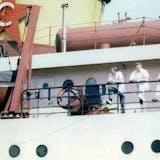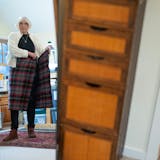Another 114 COVID-19 cases and eight deaths were confirmed Wednesday by the Minnesota Department of Health.
The state has now suffered 87 deaths and 1,809 lab-confirmed cases, including 197 who are currently hospitalized with severe illness but also 940 people who have recovered and are no longer required to isolate themselves.
All of the newly reported deaths involved residents of long-term care facilities — with six in Hennepin County and one each in St. Louis and Clay counties. COVID-19 is caused by a novel coronavirus that appears to cause more severe illness among people who are older or have underlying health conditions — making long-term care residents a high-risk population.
State health officials have responded with increased training and oversight of long-term care facilities, along with visitor and access restrictions to those facilities, to reduce the spread of infection among those high-risk individuals. State health Commissioner Jan Malcolm said there are some early signs of a payoff. While 108 long-term care facilities have reported outbreaks involving infected workers or residents, only half have had more than one case.
"It really does suggest to us that infection control is really helping limit the spread of those infections," Malcolm said.
Another 20 cases required hospital care since Tuesday, including 18 who needed intensive care. So far, 445 people have been hospitalized due to complications of the virus.
Gov. Tim Walz's statewide stay-at-home order for Minnesota was designed to at least delay the peak of COVID-19 cases into midsummer, buying time for hospitals to add beds and equipment that could otherwise be exhausted. The governor during his Wednesday media briefing urged people to continue to comply and follow social distancing recommendations that so far have showed Minnesota with the lowest rate of lab-confirmed COVID-19 case in the nation.
"What we are doing is working," he said, "and when I say we, I mean all of us."


